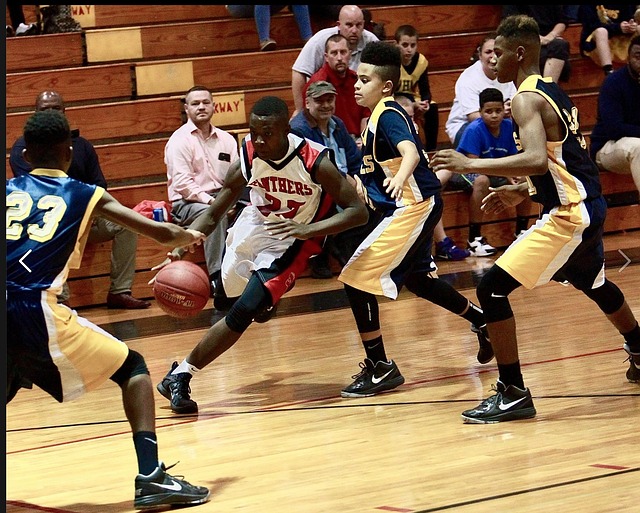When it comes to basketball, there’s one thing that stands above all else in determining a player’s skill—shooting. Whether you’re an amateur or a seasoned pro, your ability to sink shots consistently can make or break a game. The good news? You can master basketball shooting techniques and vastly improve your accuracy with a bit of know-how, practice, and some insight into the finer details.
In this article, I’ll break down the core aspects of improving your shooting accuracy. From mastering the mechanics of your jump shot to honing your free throw technique, we’ll cover the essential tips and drills that will transform you into a scoring machine on the court.
The Foundation: Basketball Shot Selection
Before we dive into the nitty-gritty of shooting form and drills, let’s take a step back and talk about basketball shot selection. Believe it or not, this is often the most overlooked aspect of a player’s game. A solid shot selection strategy can be the difference between hitting 50% of your shots and barely scratching 20%.
Good shot selection boils down to two main factors: knowing your range and understanding the defense. The best players don’t just take shots for the sake of it—they read the defense, set themselves up for success, and take shots within their comfort zone.
For example, if you’re more comfortable shooting mid-range jumpers, don’t try to force three-pointers every time you have the ball. If you’re not comfortable shooting from deep, it’s better to make a quick pass or take a dribble and reset. The key is recognizing where you’re most effective, and sticking to it. Don’t chase the “highlight reel” shots if it’s going to hurt your overall game.

Perfecting Your Shooting Form: Start With the Basics
Now that we’ve got shot selection out of the way, it’s time to dive into the meat of the matter—your shooting form. This is where things can get a little tricky because there’s no one-size-fits-all solution. Every player’s body type, shooting style, and strengths will vary, but the fundamentals remain the same.
Shooting Form Tips
- Feet Placement: Your shooting stance begins with your feet. They should be shoulder-width apart, and your weight should be balanced on the balls of your feet. You want to stay low in your stance—this helps generate power when you jump and prevents you from being too stiff. Imagine you’re about to spring into action, like a coiled spring ready to release its energy.
- Knees Bent: Your knees should be slightly bent, allowing for that much-needed upward momentum when you take your shot. Think of it like preparing for a jump—your legs should act as the engine, powering your shot.
- Hand Placement for Shooting: Let’s talk about hand placement, the part where many players go wrong. Your shooting hand should be under the ball, while your guide hand (non-shooting hand) should be placed lightly on the side. When you release the ball, it’s the shooting hand that should be doing all the work—focus on flicking your wrist as the ball leaves your fingers. A good shot should have backspin, which can be achieved by a controlled release with your wrist.
- Follow-Through: One of the most overlooked aspects of shooting is the follow-through. If you don’t finish your shot properly, all your effort will go to waste. After you release the ball, hold your follow-through for a moment. Your arm should be fully extended, and your wrist should be relaxed. Think of it like throwing a dart—your hand stays in the same position until you see the result. This not only gives you a cleaner shot, but it also helps build muscle memory, which is key to consistency.
Jump Shot Mechanics
Jump shots are often seen as the bread and butter of basketball scoring. They allow you to shoot over defenders and get that clean release. But let’s not sugarcoat it—jump shots are tricky. The mechanics need to be perfect, or the shot will miss the mark.
To start, make sure your knees bend and your body is in an athletic position. As you jump, your arms and legs should work in tandem. The power from your legs is what generates the lift, and your arms should simply be the conduit for the ball. Try not to overexert your arms—use your legs for propulsion and maintain fluidity in your motion.
When you release the ball, you want to have the same shooting form you’d use when standing still. The only difference is the added height from your jump. Aim for a smooth arc in the shot, with a backspin that makes it easier for the ball to drop into the basket. A shot that has a high arc is generally more forgiving and more likely to go in than a line-drive shot.
Three-Point Shooting: Extending Your Range
One of the most exciting developments in basketball over the last decade is the rise of three-point shooting. With the NBA encouraging deep range shooting, it’s no surprise that more players are attempting three-pointers than ever before.
However, don’t expect to shoot 40% from beyond the arc just because you can hit mid-range shots. Three-point shooting requires a slightly different set of skills. The most significant change? Power. To make shots from deep, your legs must generate more force to cover the added distance.
Additionally, the mechanics of your shot should remain consistent. A great shooter doesn’t have to adjust their form based on the distance from the basket—they just need to generate more power in their legs. Keep your feet aligned, your knees bent, and your form intact. When shooting from deep, focus on your consistency. The more you practice, the easier it will get.
Free Throw Shooting: Consistency Is Key
Free throws, often dubbed “the forgotten shot,” are critical in basketball. Whether it’s the last few minutes of a game or you’re in a tight situation, the ability to sink free throws consistently is a game-changer. Free throw shooting is all about rhythm and consistency.
To improve your free throws, start with a routine. This could be as simple as dribbling twice before you shoot or taking a deep breath before every shot. A routine helps you stay calm and focused, especially in high-pressure situations.
Pay attention to your hand placement, follow-through, and focus. You need to focus on the basket—nothing else. Free throws can be a mental battle just as much as a physical one. Stay relaxed and remind yourself to trust your mechanics.
Shooting Drills: Practice Makes Perfect
Alright, so you know the fundamentals, and you’re aware of the importance of shot selection and consistency. Now, it’s time to put that knowledge to work. But how do you do that? Through shooting drills, of course! Here are some of my favorite shooting drills to help you improve:
- Spot Shooting: Find five spots around the court—mid-range and three-point—and take 10 shots from each spot. Focus on maintaining the same form and rhythm no matter the distance.
- Form Shooting: This drill focuses on perfecting your shooting form. Stand close to the basket, and shoot with just one hand to emphasize your form. This will help eliminate any bad habits you may have developed over time.
- Free Throw Routine: As mentioned earlier, free throws are vital. Set up a routine and shoot 100 free throws a day. Track your progress, and aim to increase your percentage over time.
- Off-the-Dribble Shooting: This is a great drill to improve your shot creation. Start dribbling from one side of the court to the other, and take a shot as you come to a stop. The goal is to replicate the types of shots you’ll take during an actual game.
Shot Consistency: The Key to Mastery
Consistency is the holy grail of shooting accuracy. It’s not just about hitting a great shot every now and then—it’s about getting to the point where you can repeat the same shot with the same form, day in and day out.
The key to achieving shot consistency is muscle memory. The more you practice, the more your body will learn the correct motions, and eventually, it will become second nature. But remember, consistency doesn’t come overnight. It’s about putting in the time and getting better little by little. Keep track of your progress, and always strive to push your limits.



